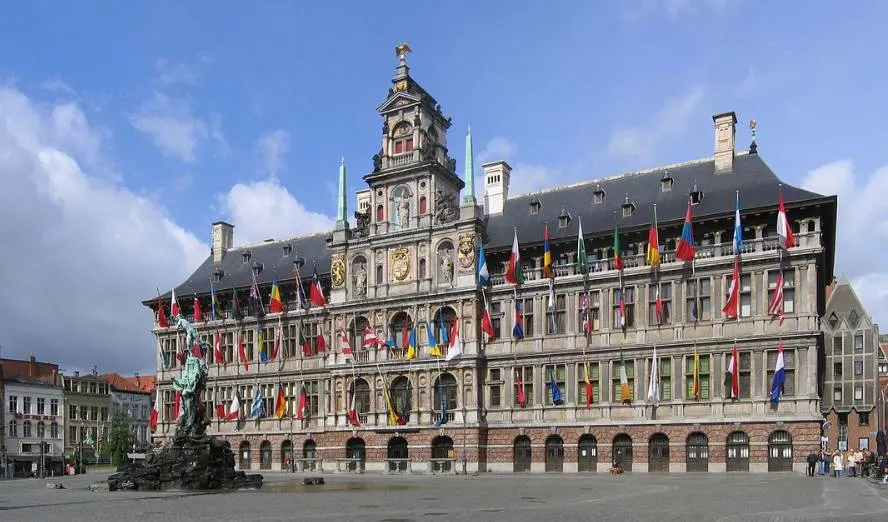Antwerp is the second-largest city in Belgium and a major port city in Europe and has been since the Renaissance emerged in Northern Europe.
The city grew in importance when Bruges became disconnected from the North Sea due to the silting-up of the Zwin area.
The richness of the architecture in Bruges emphasizes the glory period of the city during the Middle Ages.
The architecture in Antwerp, and especially that of its city hall building, reflects the glory period of the city during the Renaissance and Baroque eras.
In this article, you’ll discover some of the most interesting facts about Antwerp City Hall, an incredible Renaissance building, and one of the architectural highlights in the city.
1. The building faces the main square of the city
Antwerp City Hall is without a doubt one of the most stunning buildings in the city of Antwerp. It’s located just a few hundred meters to the east of the Scheldt River which flows through the city.
It faces the western side of the main square of the city called the “Grote Markt.” Just southeast of this square you can find one of the most amazing Gothic Cathedrals in the world called “Cathedral of Our Lady.”
This cathedral features Baroque paintings by one of the greatest Flemish artists who lived in the city, Peter Paul Rubens (1577-1640).

2. The building also faces a popular monument in Antwerp
Facing the City Hall you can find a fountain called “Brabo’s Monument” which is related to the city’s history.

The sculpture depicts a Roman soldier named Silvius Brabo who killed a giant according to a popular legend.
This giant named Druon Antigoon supposedly cut off everybody’s hand who didn’t pay tax to enter the city. This is how the name “Antwerpen” or “Throw Hand” emerged. Brabo gave the name to the province of Brabant.
The guild halls near the building ensure this magnificent square can rival Brussel’s Grand Place as well.
3. It was constructed during Antwerp’s glory period in the 16th century
Just like most thriving cities in Europe, the building was constructed to reflect the glory of Antwerp during the 16th century.
The city had grown in importance and overtook Bruges during this century as the most important port city in the Low Countries.
The building was designed in the popular Renaissance architectural style by a local architect named Cornelis Floris de Vriendt (1514-1575). He was an architect and sculptor who ran a large workshop in Antwerp at the time.
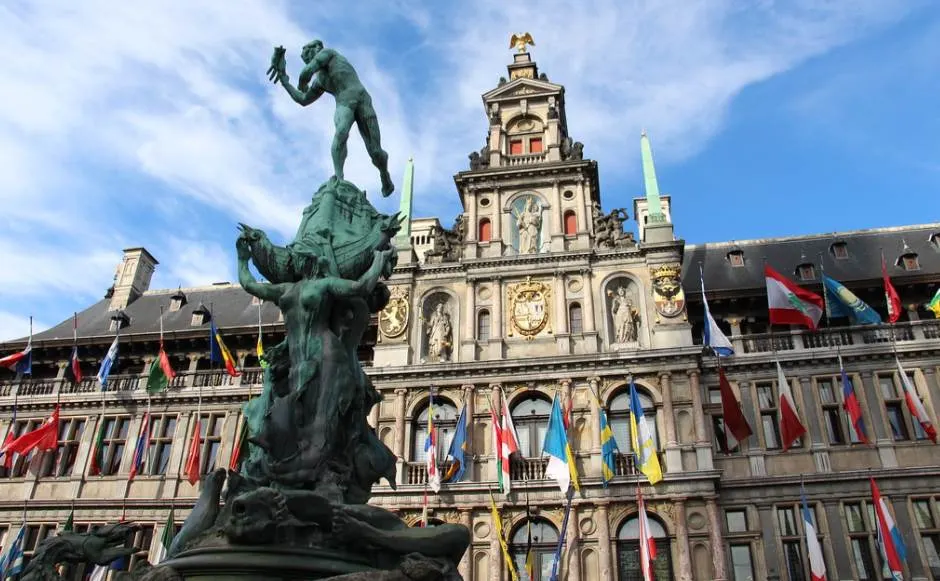
4. The original plan features a completely different design
One of the most interesting facts about Antwerp City Hall is that the original plans of the building date back to the 1540s.
These plans featured a Gothic design created by another local architect named Domien de Waghemakere.
Because these were turbulent times, the stones that were intended to be used to erect this magnificent Gothic building were used to fortify the city’s defenses instead.
This building would have looked very similar to the Gothic city halls erected in other cities of the Duchy of Brabant such as Brussels City Hall and Leuven City Hall.
5. The original version of the building was destroyed by fire after a decade
The plans to build an opulent city hall were instantly resumed when the threat of war was gone. It was quickly constructed in just 4 years during a time of relative peace.
This, unfortunately, didn’t last because of the Eighty Years’ War that broke out in 1568, a devastating event that was only resolved with the Peace of Münster in 1648.
One of the most horrible events during this war was the so-called “Sack of Antwerp” in 1573. This event is also referred to as “The Spanish Fury” and happened in early November of 1576.
The Spanish caused havoc in the city and it resulted in the Low Countries uniting against the Spanish Crown because of the sheer savagery of the event.
Antwerp City Hall was destroyed during the Sack of Antwerp but was quickly rebuilt to its original glory in the following years.
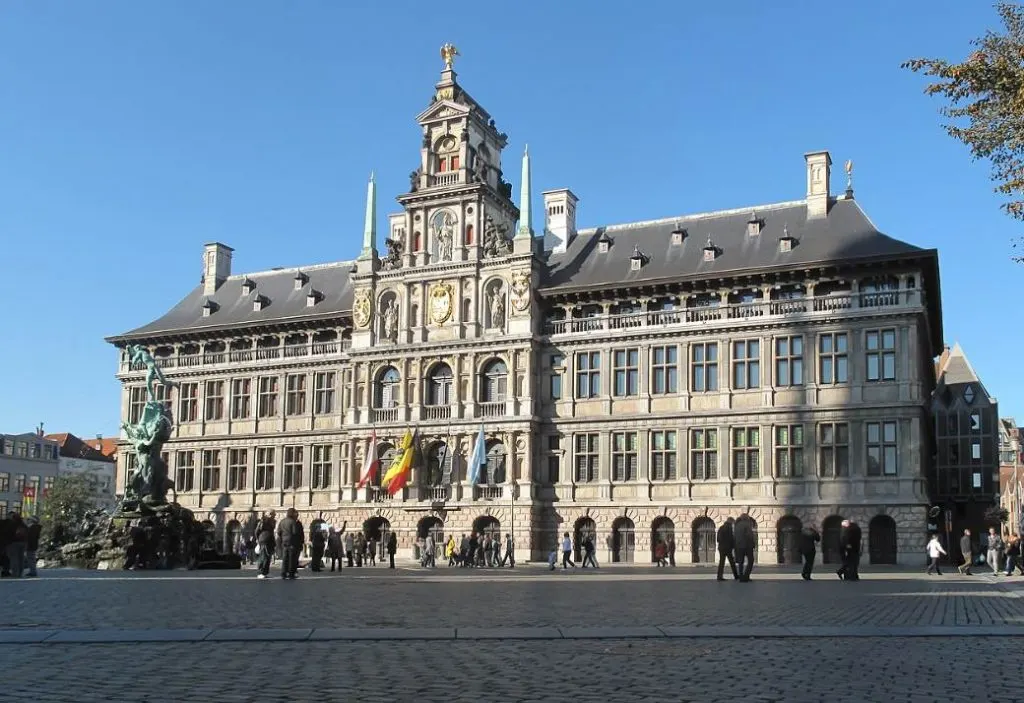
6. The building incorporates both Flemish and Italian Renaissance elements
The plans completed in the 1540s were shelved following the threat of war. During the subsequent few decades, the Gothic style had fallen out of favor.
Magnificent Renaissance buildings were erected all across Europe and because the whole point of the building was to impress, the city hall was constructed in the fashionable style of the day.
The building incorporates both Flemish elements that were based on existing structures and Italian influences based on the Renaissance style that emerged there.
7. The central part is decorated with female statues and distinctive coats of arms
The rusticated stone used on the first floor is reminiscent of the Renaissance palaces that can be found in Italy such as the Pitti Palace in Florence.
There are two stories above the ground level that are decorated with both Ionic and Doric columns. The upper floor features an open gallery.
The most decorative part of the building is the central part which is decorated with female statues. These represent an allegory of Justice, Prudence, and the Virgin Mary.
The gilded elements are coats of arms of the Duchy of Brabant, the Spanish Habsburgs, and the Margraviate of Antwerp.

8. The building has been extremely influential for other structures in Europe
Antwerp City Hall is considered to be one of the greatest Renaissance buildings ever constructed in the northern part of Europe.
The epitome of Northern Renaissance architecture has been very influential for other architects in this part of the continent and served as the main model for many other structures. Some of these include:
- The city halls of The Hague and Vlissingen in the Netherlands.
- The city hall of Emden in Germany.
- The portico of the city hall of Cologne.
- The Green Gate in Gdańsk in Poland.
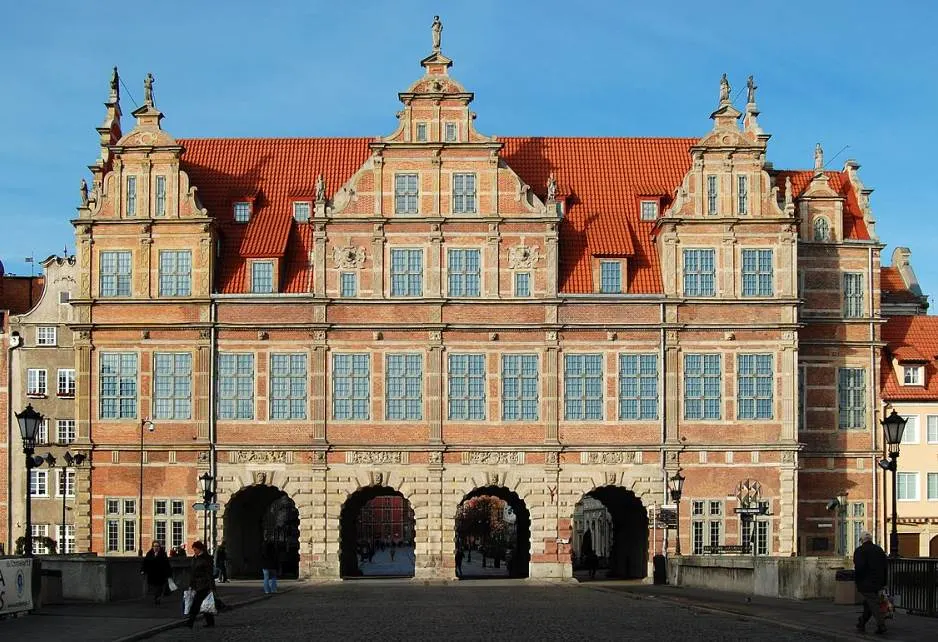
While the exterior of Antwerp City Hall still boasts the magnificent Renaissance architectural design that was completed in the late 16th century, the same can’t be said for the interior.
The interior was completely renovated in the 19th century. The stately halls and interior designs most date from its period.
The interior is also decorated with murals painted by Belgian artist Jan August Hendrik Leys (1815-1869) depicting key moments in Antwerp’s history.
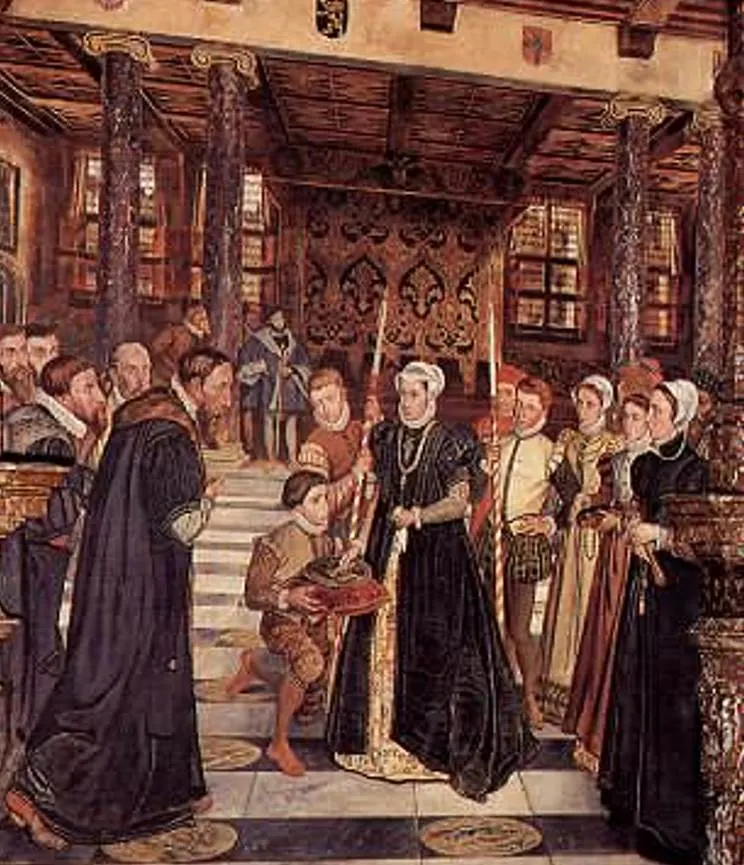
10. It became a UNESCO World Heritage site in 1999
The 16th-century building was included as one of the UNESCO World Heritage sites that make up the “Belfries of Belgium and France.”
These are described as a reflection of the wealth of the town or city, and very few buildings on this list emphasize this notion better than the magnificent Antwerp City Hall!
Additional fun fact: The flags that decorate the building are of all countries of the European Union plus countries that have a consulate in Antwerp.
